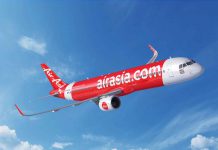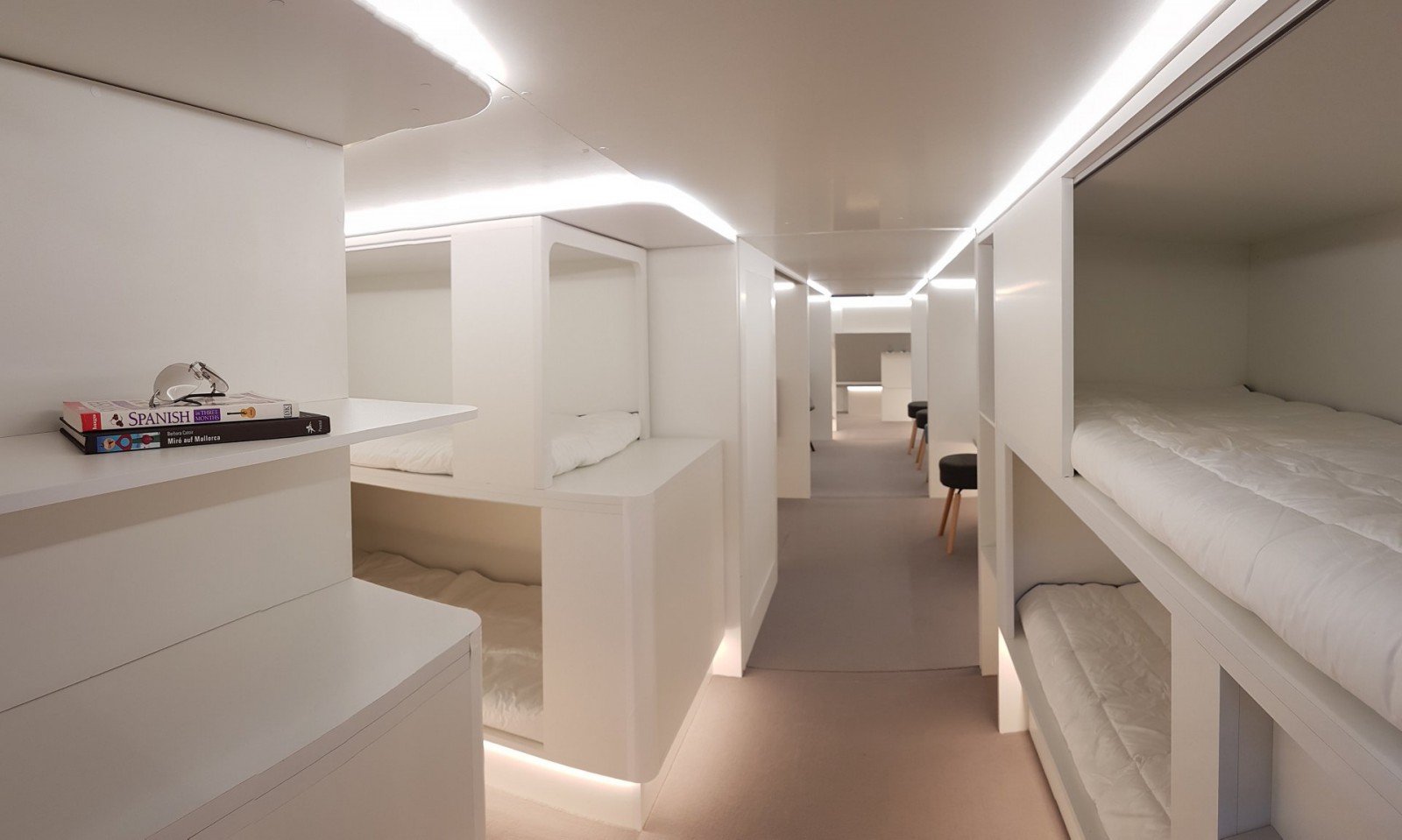Passengers may be prepared to pay a hefty premium for the luxury of stretching out in sleeping berths on ultra-long-haul flights.
Airbus says it has discussed the concept with more than 30 airlines and that a survey conducted in 2018 showed sleeper berths would be popular with passengers.
It says it has at least one airline prepared to sign up but concedes it needs more to gain traction.
If it happens, Airbus cabin product director Frederic Mazel believes there will be a “snowball effect” among airlines.
READ: New tech means your aircraft is watching you.
Airbus and partner Zodiac Aerospace (now Safran) in 2018 unveiled the concept for lower deck modules that included a lounge, a conference room and kid’s play area with a slide.
The idea, which won the 2109 Crystal Cabin Award in the cabin concepts category, was to allow airlines to differentiate themselves from their competitors with a flexible system that fits in the cargo hold.
When Airbus ran its ideas by passengers, its survey showed sleeping berths as the concept that fired their imaginations.
Mazel said sleeping berths addressed a key pain point for passengers, particularly those with young families, and also presented an understandable business case for airlines.
“The feedback we’ve got is passengers would be prepared to pay $US600 on top of their ticket price to get a bunk for a long-haul flight,” he said.
“For a family, you could exchange your bunk for the mother or the children or the dad for long flights.
“It’s like in a train or a boat – it’s the same idea.”
Long-haul aircraft could accommodate up to 32 sleeping berths which could be swapped with cargo depending on demand and flight duration.
Safety requirements mean passengers would still have an allocated seat where they would be served meals and would need to occupy for landing and take-off.
But they would be able to head down for a sleep during cruise in much the same way flight attendants and pilots use crew rests.
Among the ideas being investigated is hiring out the berths on an hourly basis to reduce the costs.
Mazel said the partnership now needed to discuss the idea with top airline managers.
“We realized last year it was a bit more complex than just convincing the innovation manager or the passenger experience manager,” he said.
“Because we touch two business lines — cargo and passenger — the decision needs to come from the top.
“The crew needs to be convinced, the marketing team, commercial team, operational team – they all need to be on board.”
Australia’s Qantas is among the airlines to be considering the concept for its ambitious “Project Sunrise” ultra-long-haul service between Sydney and London and Sydney and New York.
Qantas chief executive Alan Joyce told a London lunch last year the ability to carry cargo on the proposed ultra-long-haul aircraft would be limited and this meant there would be underfloor space that could be utilized.
“If we’re not carrying freight you can do something with the underfloor area where cargo is on the aircraft. Do you have an area where people can walk? Do you have berths, like on a train?” Joyce said at the time.
“There’s a lot of ‘out there’ thinking that’s going on. I don’t know if in 2022 if there’s another going to be another class but if there is Qantas is likely to be the airline that creates it.”
The idea of sleeper berths is not new and a proposal by US manufacturer Boeing looked at installing beds above the ceiling that could be sold to premium economy passengers on its revamped Boeing 747.
Other proposals to use cargo space have been floated over the years but none stuck.
Steve Creedy traveled to Toulouse courtesy of Airbus
























